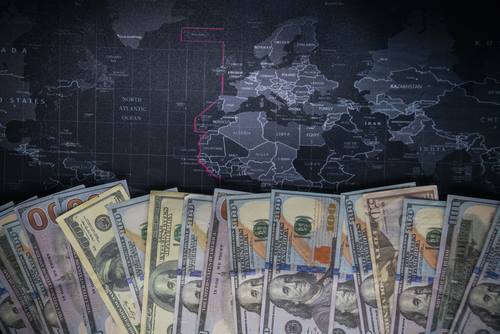The love for money has blinded the individuals and what they want is a fat bank balance without caring much about its source. The concept of online world is incomplete without talking about online fraud. Online dealings comparatively is an easy target for the criminals to enact their thinking process. Money laundering is the most favorite hobby of fraudsters when it comes to financial crimes. The weak security systems also adding up to their illicit activities. The launderer always stays in search of loopholes to hit the system at the right wound. To eliminate this illegal activity from the system, the merchants require to be efficient enough to know how these criminals operate.
Money laundering simply is the process of converting black money into white money by passing it into various commercial transactions. Businesses are required to have anti-money laws to eliminate the risks of money laundering and terrorist financing. A Forbes study revealed that 90% of the laundered money goes undetected every year. Various regulatory measures are working their best to stop these heinous acts and to prevent businesses from becoming a bridge to gap the launderer’s bad acts. Anti-money laundering compliance is the set of regulations to aid financial institutes in this regard.
Stages of Money Laundering
Placement, layering, and integration combine to make the process of money laundering complete.
- Placement
This is the first stage in money laundering. Money launderers put physical money into financial institutions like banks, casinos, and others. Criminals can enter your business by faking their identity and acting like a vendor, investor, or customer. Method of making illegal money a part of the financial institutions can be done by smuggling, asset purchases, and currency exchange.
- Layering
To clean the dirty money obtained by illicit means, layering is the second process in line. The money is broken down into smaller transactions and it is considered as the best way to hide the source of the money. Merchants can buy a big asset through their black money. After buying the asset, they can then again sell the asset to another vendor. This buying-selling cycle is an easy way to conceal where the money was originally obtained. Another way launderers use to launder their money is by investing in any other company.
- Integration
A stage where the money is made part of the economy. Buying property from illegal money is a common way to put black money into use. Shell companies are often involved in this process. A criminal may create a fake company and gives itself a loan through it. There is a chance that some international banks are also involved in this process. If any international bank is involved in the process, then it becomes difficult for law enforcement agencies to detect such illegal activity. Integration of money into the economy can also be done through import-export.
Transaction Monitoring
Considering all the ways that criminals can use and the most clever ways they can come up with, still they are not as intelligent enough as the authorities trying to combat their tricks. Compliance professionals always show themselves a step forward by coming with solutions to problems like online fraud. Anti-money laundering is the way to put a full stop to launder illegal money.
Money laundering happens when the fraudsters succeed in transacting the money through their desired ways. And to prevent money laundering, we need to cut down on these transactions. Transaction monitoring is the way to keep a check on the transaction activities of the customer. It processes by regularly monitoring the customer transaction behavior and alert the system if it sees any transaction that is inconsistent with the customer’s regular transaction behavior. The system checks the suspicious transaction and performs security measures on it to verify if it was made by the authorized user.
Industries used for Money Laundering
It is a common perception that only banks are used for money laundering purposes. It is true but a half-truth because along with banks other financial institutes are also used for this purpose.
Banks
Banks are the most common entity through which money laundering happens. It is involved in all three stages like placement, layering, and integration.
FinTech Industries
The fintech industry provides financial services to unbanked individuals. E-currencies like cryptocurrency helping the sales and purchase of assets. This industry is helpful in the layering stage of money laundering.
E-commerce
Criminals fake their identities to onboard e-commerce platforms. They buy goods and then sell them to legal authorities to make layers of transactions. Sometimes they pretend to be a vendor and reach a legitimate merchant to sell their goods. Later they manipulate the business to incorporate illegal money.
Conclusion
Launderers use money laundering to whitewash illegally obtained money by passing it into various commercial transactions. Placement, layering, and integration are the stages for completing a money laundering cycle. Businesses must comply with the KYC/AML regulations to eliminate crimes like money laundering and terrorist financing.

